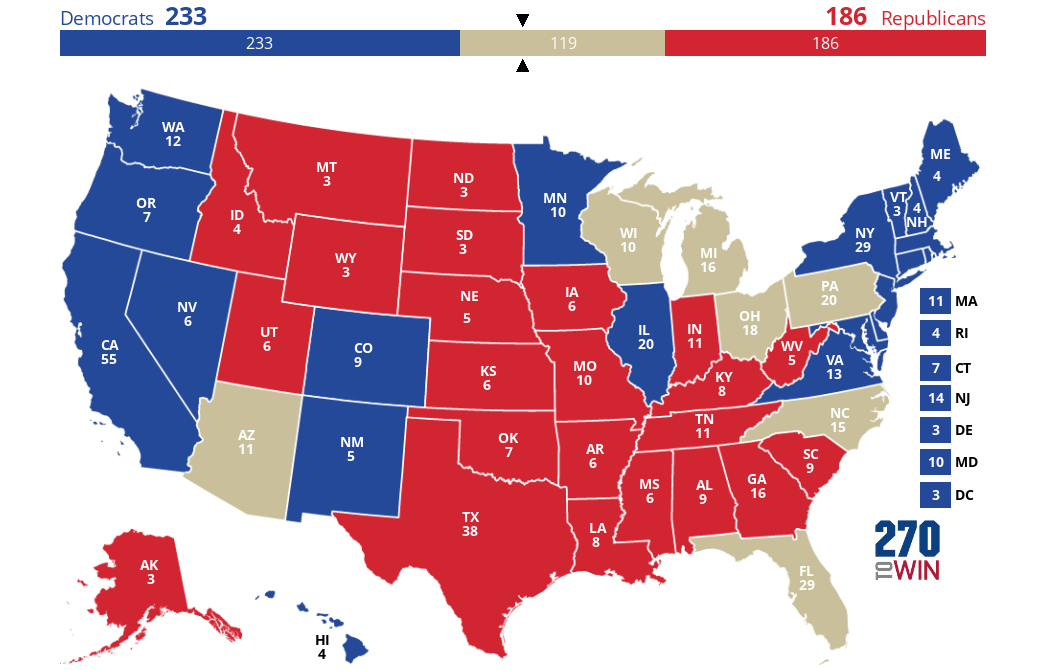The Republicans are having their national convention this weekend. Donald Trump will be nominated as their candidate for president, something that most pundits saw as a joke when he announced last year.
Readers should be cautioned that the national polling figures for the USA are nearly useless in determining the closeness of the presidential race. Three major states with huge populations, California, Illinois and New York, are very heavily Democratic-leaning and they will not be seriously contested during the election. These states will involve lop-sided victories and will skew the numbers.
Instead, readers should be looking at the following states (electoral votes in brackets):
Florida (29)
Pennsylvania (20)
Ohio (18)
Michigan (16)
North Carolina (15)
Arizona (11)
Wisconsin (10)
Iowa (6)
Note it is very probable that Hillary Clinton requires 270 to win, while Donald Trump requires 269 to win.
I will be reverting my previous prediction of a “landslide” to a moderate victory for Donald Trump. As readers can infer from this map, the Republicans have much more “work” to do to win these swing states than the Democrats. That said, the nature of elections in Canada and the USA depend on a factor of voter turnout, something that polling does very poorly – the primary component of this assumption is that Trump has the ability to get out previous non-voters due to his non-political methods.
I will also state that I do not endorse the policies of either candidate. It is simply a prediction of what I believe will happen given what is going on in the USA political landscape. From a market investment perspective, it is likely the fruition of Donald Trump’s policies will cause considerable volatility in the markets and the markets are not sufficiently bracing for impact.

 Click the map to create your own at
Click the map to create your own at